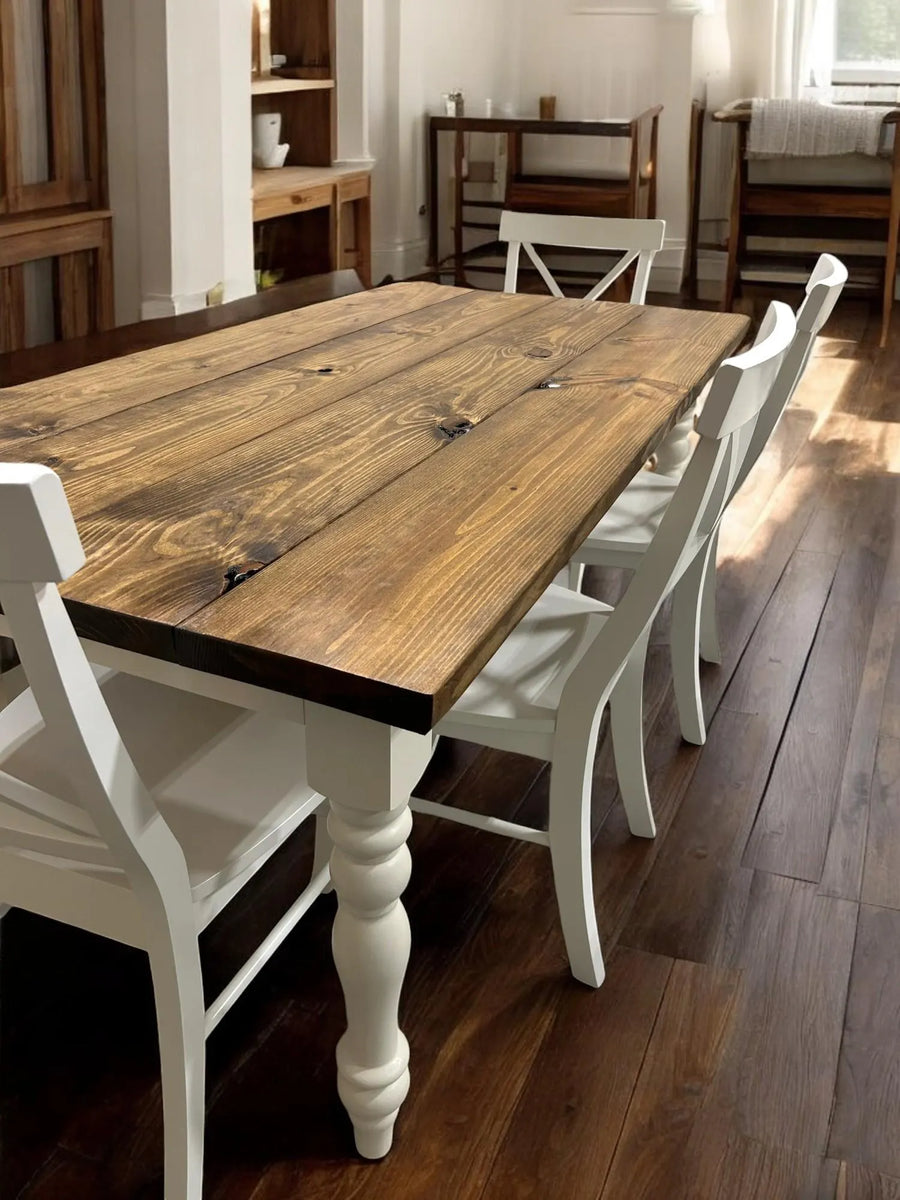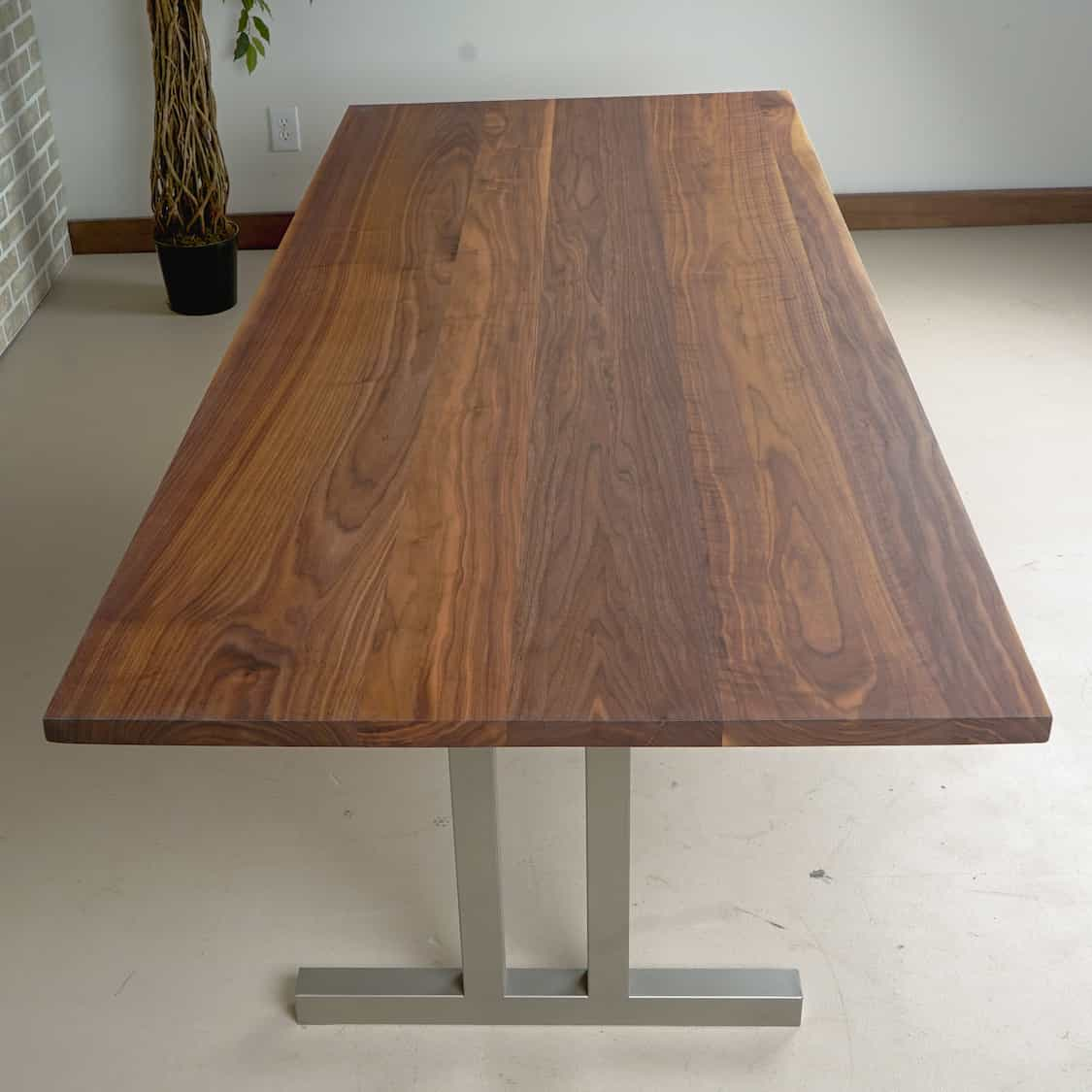Necessary Considerations for Picking the Right Dining Table Legs Timber
Choosing the appropriate timber for eating table legs includes a nuanced understanding of different aspects that influence both performance and visual charm. The selection of timber kind, varying from robust woods to more fragile softwoods, plays a crucial function in ensuring toughness and stability. Furthermore, factors to consider concerning spending plan, maintenance, and style have to be carefully examined. Each of these components can considerably impact the overall experience of your eating room. Comprehending exactly how these variables relate is important for making an informed choice that fulfills your details needs and preferences - Dining Table Legs Wood. What factors to consider will you prioritize in your choice procedure?
Importance of Timber Type

Hardwoods, such as walnut, oak, and maple, are often chosen for their toughness and resistance to wear. These kinds of wood provide a robust structure that can stand up to everyday use, making them optimal for eating tables that experience regular events. In contrast, softer timbers like pine might be more susceptible to damages and scrapes, which may not be perfect for high-traffic areas.
Moreover, the choice of timber can additionally influence the simplicity of maintenance. Some woods call for normal oiling or securing to protect their appearance, while others might be extra flexible. Eventually, selecting the proper timber type entails stabilizing aesthetic considerations with useful demands, guaranteeing that the table legs not just look attractive but additionally stand the examination of time.
Examining Stability and Toughness
When examining table legs, one have to think about the stability and toughness they supply to the overall framework. The legs are important in supporting the table top and guaranteeing the dining experience is secure and pleasurable. A stable table is necessary for avoiding wobbling or tipping, which can lead to spills or mishaps throughout meals.
The selection of wood type dramatically impacts strength. Hardwoods such as oak, walnut, and maple are typically extra long lasting and robust than softwoods like want or fir. Additionally, the density and layout of the legs play an important duty; thicker legs or those with a tapered style can use better assistance and stability.

Aesthetic Factors To Consider
While performance is critical, the visual appeal of dining table legs can not be overlooked, as they dramatically influence the general layout and ambiance of the dining room. The selection of coating, design, and wood can boost or take away from the table's visual influence.

Coatings additionally play a critical function in aesthetics. A natural finish can highlight the wood's innate elegance, while painted or tarnished legs can present shade and individuality right into the area. The proportion and range of the legs loved one to the tabletop and surrounding furniture must be taken into consideration to guarantee visual balance and communication.
Eventually, the table legs must not only serve a useful purpose however also add to a natural and welcoming atmosphere, making them a crucial factor to consider in the overall style of the eating area.
Maintenance Requirements
To ensure long life and preserve the appeal of wooden eating table legs, normal maintenance is important (Dining Table Legs Wood). Wood is an all-natural material that can be prone to damage from dampness, warmth, and use. For that reason, developing a regular care strategy will significantly enhance the resilience of your dining table legs.
Begin with normal cleaning utilizing a soft, lint-free towel to eliminate dirt and debris that can scrape the surface area. For more detailed cleaning, utilize a light soap solution and damp cloth, staying clear of excess dampness that could leak into the wood. It is recommended to apply a top quality timber gloss or conditioner every few months to nurture the wood and preserve its radiance.
Resolve any dents or scrapes quickly with ideal wood filler or touch-up pens to protect against additional damage. By adhering to these upkeep needs, you will not just protect the aesthetic appeal of your wooden eating table legs however likewise extend their practical life-span.
Budget Plan and Price Factors
Spending plan and price factors frequently play a vital duty in the decision-making procedure for selecting wooden table legs. When examining alternatives, it is essential to establish a clear budget that aligns with your general furniture investment. The expense of wooden her latest blog eating table legs can differ substantially based upon the kind of craftsmanship, wood, and design complexity.
Woods such as walnut, oak, and cherry normally command greater prices due to their longevity and aesthetic appeal. On the other hand, softer woods like pine might be extra inexpensive but could not supply the very same durability. Furthermore, custom-made or artisan-crafted legs can incur extra prices, showing the skill and time bought their production.
It is likewise crucial to think about the potential lasting worth of your investment. While choosing lower-cost products might appear monetarily prudent originally, they may see here now need even more constant replacement or repair work, ultimately enhancing general expenditure.
Consequently, balancing top quality and cost is important. Focus on products that meet your visual choices while ensuring they fit easily within your spending plan, enabling you to produce a dining area that is both aesthetically enticing and practical.
Final Thought
Finally, choosing the proper wood for dining table legs necessitates careful factor to consider of various elements, consisting of timber kind, security, aesthetics, upkeep, and budget plan. Hardwoods such as oak and walnut supply superior durability and stamina, while style and thickness add to total stability. Aesthetic appeal and maintenance demands must straighten with individual preferences and way of life. Eventually, a knowledgeable decision will certainly boost the durability and aesthetic charm of the table, making certain fulfillment and capability for many years to find.
Choosing the right type of wood for eating table legs is crucial for both aesthetic appeal and architectural stability. Eventually, choosing the suitable wood kind entails stabilizing aesthetic considerations with sensible needs, making certain that the eating table legs not only look appealing but additionally stand the find out examination of time.
It is a good idea to apply a high-quality timber gloss or conditioner every few months to nourish the timber and preserve its radiance.
The cost of wooden dining table legs can differ substantially based on the type of craftsmanship, layout, and wood intricacy.
In conclusion, picking the proper wood for eating table legs requires careful factor to consider of different factors, consisting of wood kind, stability, visual appeals, upkeep, and budget plan.